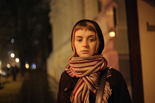The Reopened National Gallery of Art in Vilnius (Article)
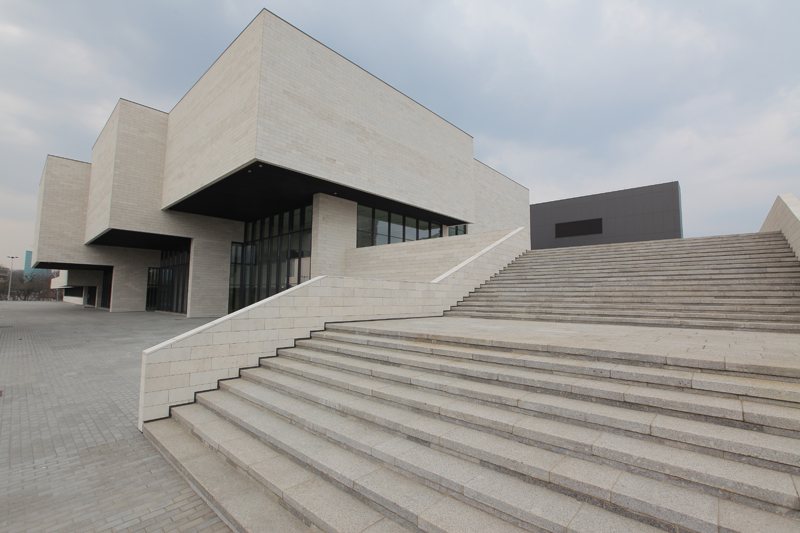 My studies of the history of 20th century Lithuanian art were based on reproductions. The rest of my generation and some of the preceding ones had no choice in the matter either; for almost 20 years, the closure of the permanent exposition of 20th century works in Vilnius’ Town Hall made it impossible for younger generations to get acquainted with the country’s art classics directly. It was only on June 20, 2009 that the National Gallery of Art (NGA) reopened, in the building of the former Museum of Revolution in Vilnius, finally providing an opportunity to see the works that had previously been available only as low-quality reproductions.
My studies of the history of 20th century Lithuanian art were based on reproductions. The rest of my generation and some of the preceding ones had no choice in the matter either; for almost 20 years, the closure of the permanent exposition of 20th century works in Vilnius’ Town Hall made it impossible for younger generations to get acquainted with the country’s art classics directly. It was only on June 20, 2009 that the National Gallery of Art (NGA) reopened, in the building of the former Museum of Revolution in Vilnius, finally providing an opportunity to see the works that had previously been available only as low-quality reproductions.
To celebrate its opening, NGA complemented the permanent collection with a temporary exhibition entitled Dialogues of Colour and Sound. Works by Mikalojus Konstantinas Ciurlionis and his Contemporaries, presenting not only musical compositions and paintings by a key historic figure in Lithuanian fine art and music, symbolist Mikalojus Konstantinas Ciurlionis, but also the works of his famous contemporaries, including Edvard Munch, Wassily Kandinsky and František Kupka. The overall success of the exhibition, however, has unfortunately been overshadowed by bureaucratic complications. From the early planning stages until now, NGA has found itself at the center of numerous debates and controversies.
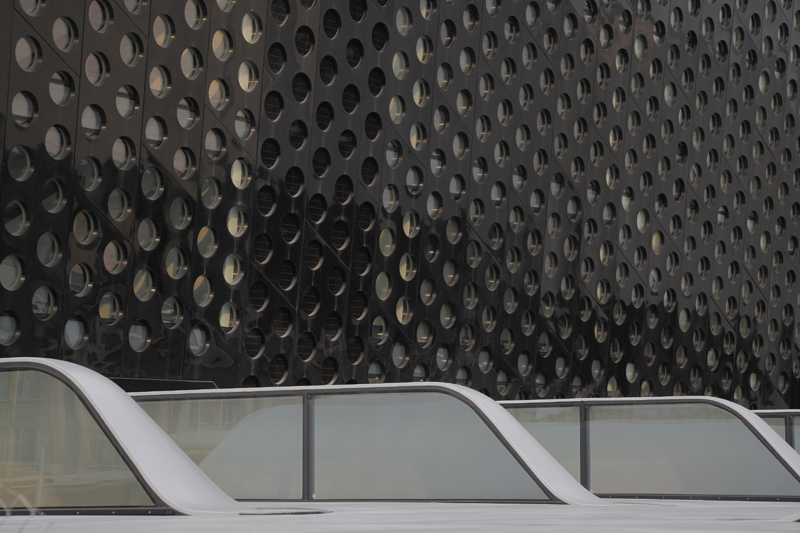 The initial disputes concerned the space housing NGA itself; many local intellectuals supported the idea of choosing a location in Vilnius’ Old Town. They opposed the renovation of the former Museum of the Revolution, a building that carried unpleasant historical connotations. In its previous incarnation the museum had displayed icons and symbols of Socialism, Communism, and The Great Victory against the Nazis. For Lithuanians these exhibits represented occupation, violence, repression, and the imposition of an ideology that destroyed the national and cultural identity of Lithuania. Nevertheless, the renovation proposal passed and the museum, designed by Gediminas Baravykas and Vytautas Vielius in 1966 and built on the picturesque right bank of the Neris River, became the new home for the National Gallery of Art.
The initial disputes concerned the space housing NGA itself; many local intellectuals supported the idea of choosing a location in Vilnius’ Old Town. They opposed the renovation of the former Museum of the Revolution, a building that carried unpleasant historical connotations. In its previous incarnation the museum had displayed icons and symbols of Socialism, Communism, and The Great Victory against the Nazis. For Lithuanians these exhibits represented occupation, violence, repression, and the imposition of an ideology that destroyed the national and cultural identity of Lithuania. Nevertheless, the renovation proposal passed and the museum, designed by Gediminas Baravykas and Vytautas Vielius in 1966 and built on the picturesque right bank of the Neris River, became the new home for the National Gallery of Art.
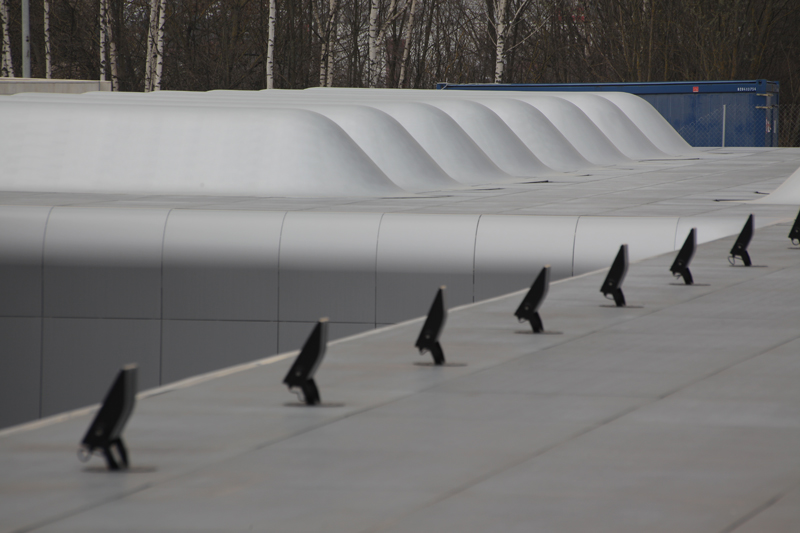 The reconstruction began in 2004 following to a design by Andrius Bu?as, Gintaras Kuginis, and Darius ?aplinskas that had won the competition in 2003. This project sought to retain the building’s original architectural style, façade, and dimensions. The gallery’s inner structure, however, was to be modified substantially. Numerous inconveniently placed partition walls that had previously divided the museum space (fairly small, as it had been) were removed, and the basement, originally designed for underground storage and maintenance facilities, was deepened. Most controversial of all the alterations, however, were the construction of administrative offices in two tilted structures at the entrance of the gallery, which were designed to resemble screens or the inside of radio transistors. These structures have been repeatedly criticized as ill-considered and impractical: not only are the LCD screens built into their façade too small to be readable from a distance, but the gallery’s staff appears to be locked in glass corridors.
The reconstruction began in 2004 following to a design by Andrius Bu?as, Gintaras Kuginis, and Darius ?aplinskas that had won the competition in 2003. This project sought to retain the building’s original architectural style, façade, and dimensions. The gallery’s inner structure, however, was to be modified substantially. Numerous inconveniently placed partition walls that had previously divided the museum space (fairly small, as it had been) were removed, and the basement, originally designed for underground storage and maintenance facilities, was deepened. Most controversial of all the alterations, however, were the construction of administrative offices in two tilted structures at the entrance of the gallery, which were designed to resemble screens or the inside of radio transistors. These structures have been repeatedly criticized as ill-considered and impractical: not only are the LCD screens built into their façade too small to be readable from a distance, but the gallery’s staff appears to be locked in glass corridors.
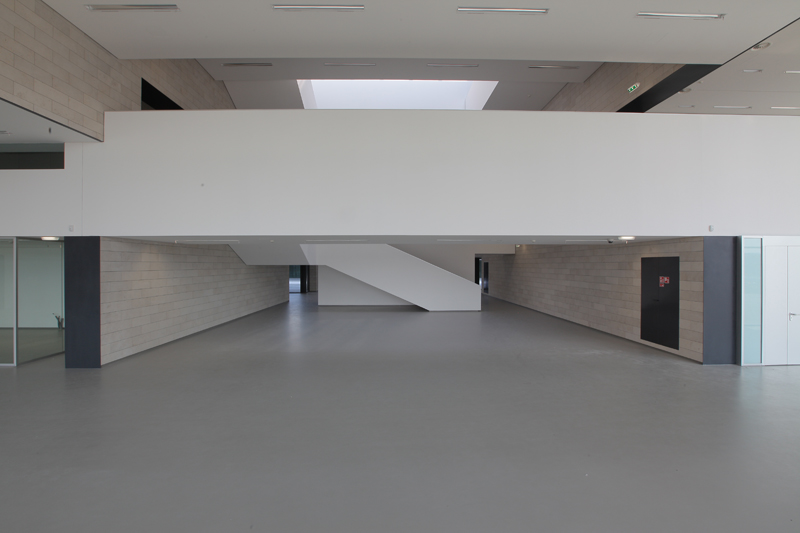 Nevertheless, the reconstruction project, located between the new glass-and-steel administrative buildings and the picturesque landscape of the Old Town, clearly illustrates NGA’s concept: it is open to the whole of Lithuania’s history, approaching it with new interpretations from a contemporary perspective that has long been absent. NGA is a living, developing and self-renewing organism that reflects the vision of Vilnius itself, especially the right bank of Neris.
Nevertheless, the reconstruction project, located between the new glass-and-steel administrative buildings and the picturesque landscape of the Old Town, clearly illustrates NGA’s concept: it is open to the whole of Lithuania’s history, approaching it with new interpretations from a contemporary perspective that has long been absent. NGA is a living, developing and self-renewing organism that reflects the vision of Vilnius itself, especially the right bank of Neris.
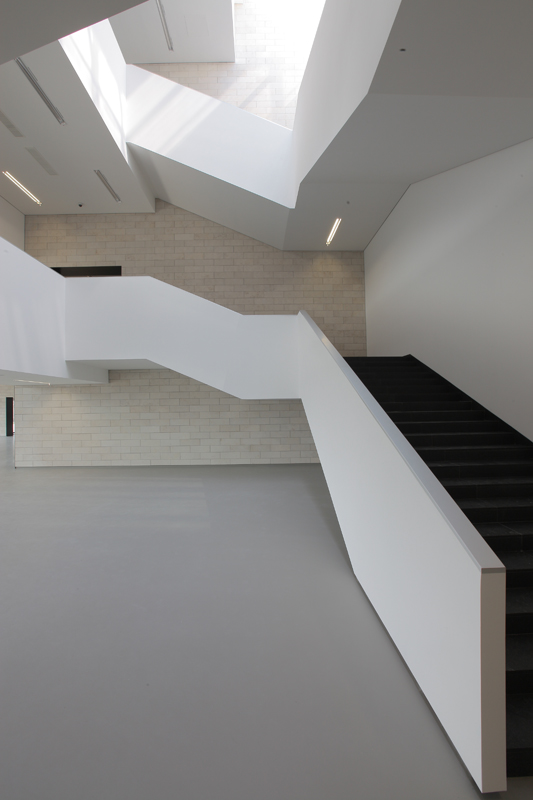 This search for intersections between past and present is not merely reflected in the city’s renewal or the museum’s new architecture. Rather the logic behind the gallery’s permanent exposition further displays the flux in which Lithuanian art finds itself. Some Lithuanian critics have lamented the fact that the small space dedicated to NGA’s permanent exposition, which spreads over nine exhibition halls and one video screening hall (the last, eleventh hall, is designed for temporary exhibitions), does not allow for a complete presentation of the rich collection of 20th-21st century Lithuanian art that the Museum has accumulated. Others have been quick to point out the evidently cramped arrangement of the exposition.
This search for intersections between past and present is not merely reflected in the city’s renewal or the museum’s new architecture. Rather the logic behind the gallery’s permanent exposition further displays the flux in which Lithuanian art finds itself. Some Lithuanian critics have lamented the fact that the small space dedicated to NGA’s permanent exposition, which spreads over nine exhibition halls and one video screening hall (the last, eleventh hall, is designed for temporary exhibitions), does not allow for a complete presentation of the rich collection of 20th-21st century Lithuanian art that the Museum has accumulated. Others have been quick to point out the evidently cramped arrangement of the exposition.
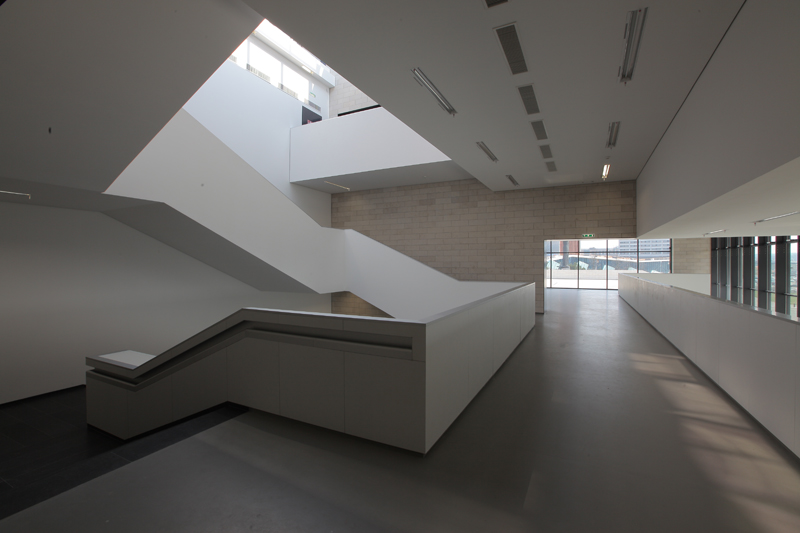 Romualdas Budrys, the long-time director of the Lithuanian Art Museum, of which NGA is a branch, and Lolita Jablonskien?, head of the National Gallery of Art, have responded repeatedly to similar questions addressed to them by critics in the media. Their answers, however, have not been uniform, and the incongruities between their responses reveal the major differences in their respective approaches to shaping the permanent exhibition. Budrys, a representative of the classical museum tradition, sees the exposition as being gradually formed, or as he puts it, “resembling a tree that had started growing fifty years ago, which cannot be cut or replaced by a newly planted one.”(Romualdas Budrys, “Whatever we do, someone will always be discontent,” In: Kult?ros barai 10 / 2009, p. 35.) Thus, the permanent exhibition means the opportunity to continue and cultivate the fifty year-long history of this collection, but does not include the necessity of searching for new ways to interpret it.
Romualdas Budrys, the long-time director of the Lithuanian Art Museum, of which NGA is a branch, and Lolita Jablonskien?, head of the National Gallery of Art, have responded repeatedly to similar questions addressed to them by critics in the media. Their answers, however, have not been uniform, and the incongruities between their responses reveal the major differences in their respective approaches to shaping the permanent exhibition. Budrys, a representative of the classical museum tradition, sees the exposition as being gradually formed, or as he puts it, “resembling a tree that had started growing fifty years ago, which cannot be cut or replaced by a newly planted one.”(Romualdas Budrys, “Whatever we do, someone will always be discontent,” In: Kult?ros barai 10 / 2009, p. 35.) Thus, the permanent exhibition means the opportunity to continue and cultivate the fifty year-long history of this collection, but does not include the necessity of searching for new ways to interpret it.
 Jablonskien?, on the other hand, perceives the permanent exposition as being created by seeking to review the existing collection from a new perspective, by looking for relationships not only with contemporary art, but with the present epoch in general. The combination of these two approaches results in a mixture of principles in organizing the exposition. Its structure is both chronological and thematic. Such blending of principles has challenged art experts, forcing them to explore the exposition with maximum attention. Many of the nuances of the organization, however, may not be readily apparent to the general public, for whom the exhibition exists more as a first encounter with the originals of iconic Lithuanian works of art than a fully-realized statement on the history of art in Lithuania.
Jablonskien?, on the other hand, perceives the permanent exposition as being created by seeking to review the existing collection from a new perspective, by looking for relationships not only with contemporary art, but with the present epoch in general. The combination of these two approaches results in a mixture of principles in organizing the exposition. Its structure is both chronological and thematic. Such blending of principles has challenged art experts, forcing them to explore the exposition with maximum attention. Many of the nuances of the organization, however, may not be readily apparent to the general public, for whom the exhibition exists more as a first encounter with the originals of iconic Lithuanian works of art than a fully-realized statement on the history of art in Lithuania.
Furthermore, the temporary exhibition Dialogues of Colour and Sound. Works by Mikalojus Konstantinas Ciurlionis and his Contemporaries (curated by Rasa Andriušyt?-Žukien?, Osvaldas Daugelis, Vojtech Lahoda, and Šar?nas Nakas), which marks the opening of NGA, is in large part the result of a compromise between the two major Lithuanian national programs of 2009: Vilnius–European Capital of Culture 2009 and Commemoration of the Millennium of Lithuania.
Ciurlionis (1875-1911) is a central figure of 20th century’s Lithuanian art and culture, and his work brings together both international cultural trends and different art forms–fine art and music. The five-part exhibition presents works in thematically organised groups: Sounds of Nature, Universal Silence, Urban Ramble, Music Charms; the fifth section, entitled Natural Music, is dedicated to musical works by Ciurlionis and his contemporaries (Arnold Schönberg, Julian Carillo and others). The selected works cover the period of the most active development of Modernist trends in Europe and also demonstrates Lithuania’s engagement in this artistic transformation.
The exhibition thus features the iconic figure of Lithuanian art in new colors. And, in this new light, the public can see that in the early 20th century an artist with a provincial background managed not only to absorb artistic trends of the time in a highly original manner, but also to present them within Lithuania. Ciurlionis’ oeuvre demonstrates this most vividly in the context of his contemporaries’ works.
NGA’s newest show, on display in the temporary exhibitions hall, once again emphasizes the institution’s ambition to actively and audaciously seek dialogue with the (still sensitive) past: on October 2 the travelling exhibition put together by London’s Victoria & Albert Museum and titled Cold War Modern: Art and Design 1945-1970 (curated by David Crowley and Jane Pavitt) opened to the public. This exhibition is the first to present art, design, fashion, architecture, and film from both the West and the East, previous rivals in the Cold-war era.
Most significant, however, is that this exhibition is on display in the former Eastern bloc for the first time, in a country where the objects presented as exhibits are often still used in households,. This is the first time that such an exhibition has been seen by the so-called Homo Sovieticus and its subsequent generation, andit has prompted a number of art critics to rethink the very concept of what counts as an art exhibition–after all, some of the objects are part of their daily life! No wonder, then, that many responded to the exhibition quite affectedly, almost nostalgically, trying hard to fake an objective view.
 The National Gallery of Art has catalysed Lithuanians’ self-reflection once again, not merely within the context of the county’s own troubled history but also internationally. The very word “National” in the institution’s name appears to obligate it to work on a much wider scale than merely presenting exhibitions or organizing educational workshops for schoolchildren; the gallery actively studies, compares, and presents the links between art and general history, reviews their influence on today’s context, and invites a wide circle of visitors to take a look at their own identity and the history of its development through the prism of art.
The National Gallery of Art has catalysed Lithuanians’ self-reflection once again, not merely within the context of the county’s own troubled history but also internationally. The very word “National” in the institution’s name appears to obligate it to work on a much wider scale than merely presenting exhibitions or organizing educational workshops for schoolchildren; the gallery actively studies, compares, and presents the links between art and general history, reviews their influence on today’s context, and invites a wide circle of visitors to take a look at their own identity and the history of its development through the prism of art.
Translation by Jurij Dobriakov

